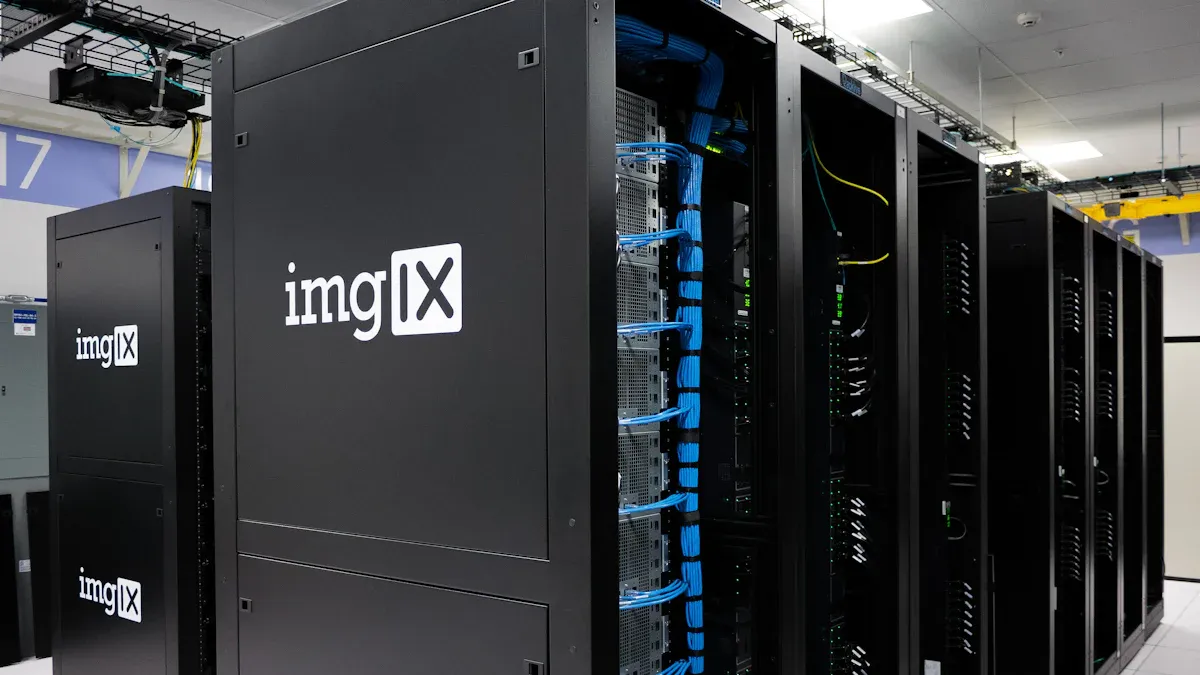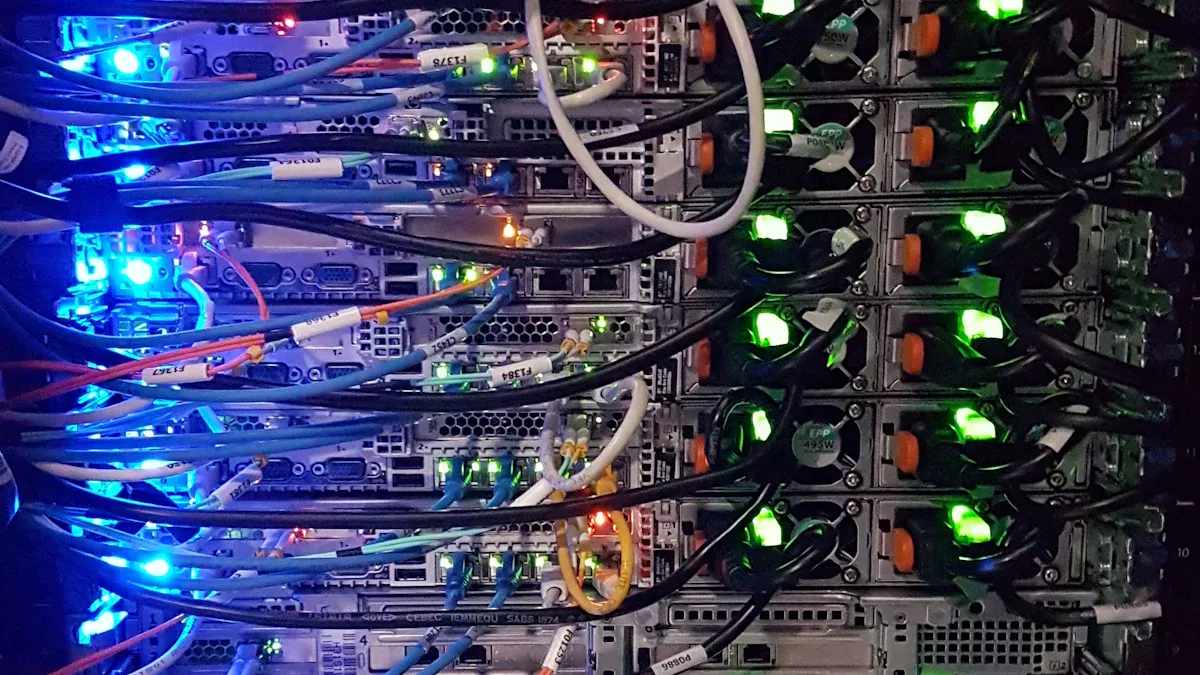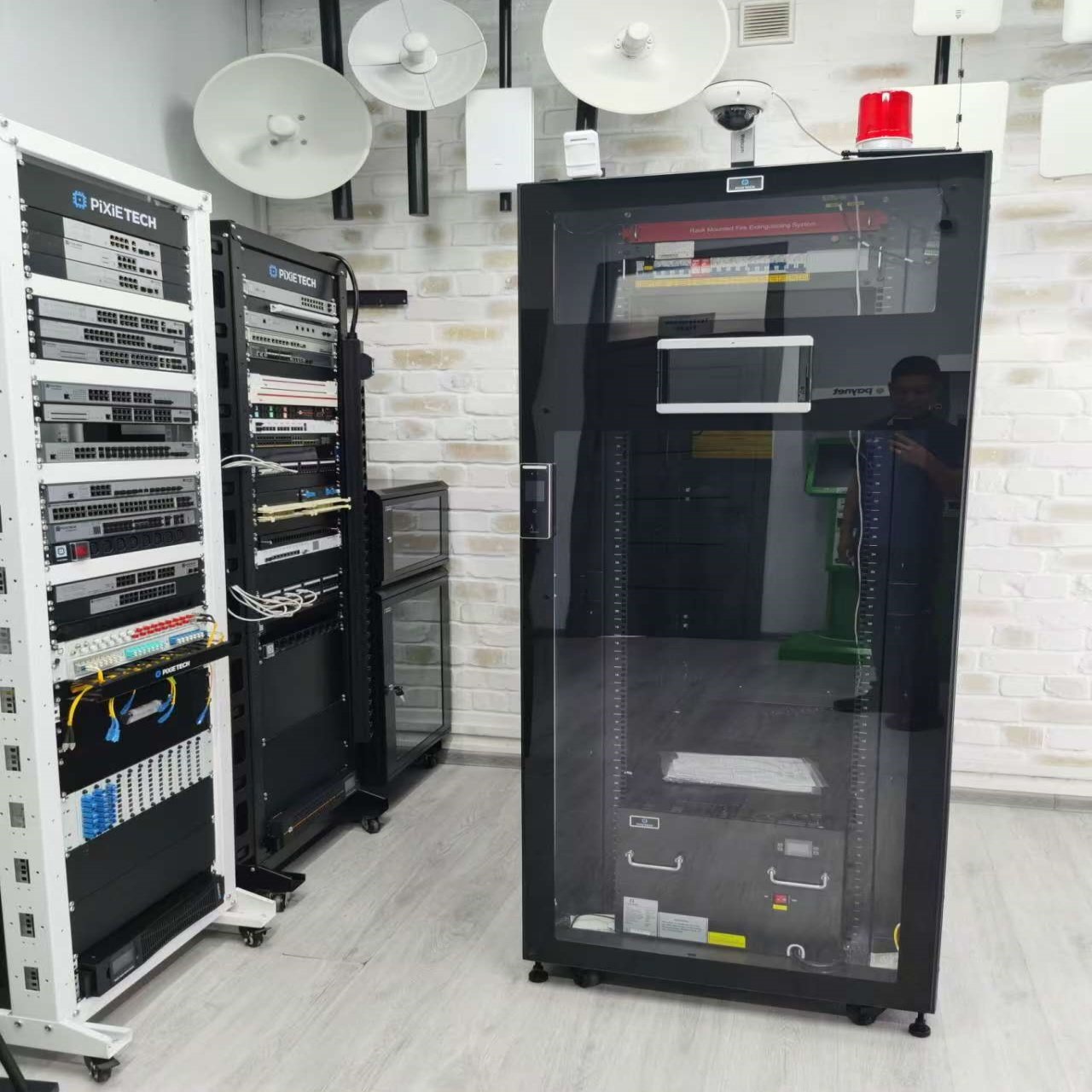A Pdu Switch gives IT administrators the ability to manage power remotely, ensuring reliable performance for critical devices.
- Operators often face challenges such as energy waste, lack of real-time alerts, and difficulty controlling individual outlets.This technology helps optimize efficiency and supports secure, flexible power management.
Key Takeaways
- A PDU switch lets IT staff control and monitor power remotely for each outlet, improving uptime and simplifying maintenance.
- Remote power control helps save energy by turning off unused devices and reduces downtime by allowing quick equipment resets.
- Secure management features protect critical systems from unauthorized access, ensuring reliable and safe power operations.
PDU Switch Features and Capabilities

Remote Power Control
A Pdu Switch gives administrators the ability to control power to devices from any location. This remote power control means they can turn outlets on or off, or even reboot equipment, without being physically present. Data centers benefit from this feature because it allows quick responses to issues, such as restarting a server that has stopped working. This reduces downtime and keeps systems running smoothly. Remote power control also helps save energy by allowing operators to power down unused equipment, which lowers energy costs and supports sustainability goals.
Tip: Remote power control can prevent unauthorized access by letting administrators manage outlet states securely from a distance.
Modern Pdu Switch models support many communication protocols, including SNMP, SSH, Telnet, and secure web interfaces. These protocols make it easy to manage power, receive alerts, and monitor status from anywhere in the world.
| Protocol/Technology | Description |
|---|---|
| SNMP | Sends commands and receives notifications for monitoring and control. |
| HTTPS/SSL Encryption | Secures web-based management and protects sensitive data. |
| RS232/RS485 Ports | Offers serial connectivity for versatile control. |
| Email Notifications | Sends alerts and event updates to administrators. |
| Cascading/Daisy-Chaining | Links multiple units for scalable remote power control. |
Outlet-Level Management
Outlet-level management is a key feature that sets a Pdu Switch apart from basic power strips. With this capability, administrators can control and monitor each outlet individually. This means they can reboot a single device, lock an outlet to prevent accidental disconnection, or schedule power sequencing to avoid overloading circuits. Outlet-level management helps maximize uptime by allowing quick troubleshooting and targeted maintenance.
- Remote rebooting or cycling of unresponsive equipment reduces downtime.
- Monitoring electrical and environmental parameters at each outlet helps predict and prevent failures.
- Locking outlets enhances reliability by preventing accidental unplugging.
- Power sequencing avoids circuit breaker trips and supports safe equipment startup.
This granular control improves deployment accuracy and supports efficient maintenance, making it a cost-effective solution for busy IT environments.
Power Monitoring and Reporting
A Pdu Switch provides advanced power monitoring and reporting functions. Unlike basic PDUs, which only distribute power, switched PDUs offer real-time data on voltage, current, and energy consumption at both the rack and outlet levels. This detailed monitoring helps operators identify energy waste, optimize resource allocation, and prevent overloads.
- Real-time monitoring delivers accurate power usage data, often within 1% accuracy.
- Outlet-level metering tracks consumption for each device, supporting capacity planning.
- Alerting mechanisms, such as email or text notifications, warn administrators about alarms or issues.
- Intuitive web interfaces allow easy access to monitoring and control features.
Note: Combining monitoring and switching functions in a Pdu Switch enables comprehensive power management and supports energy efficiency initiatives.
Switched PDUs also integrate with data center infrastructure management (DCIM) systems, providing a unified view of power usage and environmental conditions. This integration supports predictive maintenance, reduces operational costs, and aligns with sustainability goals.
PDU Switch Comparison and Practical Benefits

PDU Switch vs. Basic, Metered, and Monitored PDUs
Understanding the differences between PDU types helps IT professionals choose the right solution for their needs. Each type offers unique features and levels of control.
- Basic PDUs distribute power to multiple devices. They do not offer monitoring or remote control. These units work best in small setups where power needs are simple and predictable.
- Metered PDUs add real-time power monitoring at the unit level. They help operators track voltage, current, and power factor. This feature supports larger data centers that need to monitor energy use and prevent overloads.
- Switched PDUs, also known as PDU switches, combine metering with remote switching. They allow remote control of individual outlets, making it possible to turn devices on or off and reboot equipment from anywhere.
- Managed PDUs provide the most advanced features. They include metering, switching, detailed monitoring, alerting, and automation tools. These units offer maximum flexibility and control for complex environments.
The table below summarizes the main differences:
| Feature/Aspect | Basic PDUs | Metered PDUs | Switched PDUs (PDU Switch) | Managed PDUs |
|---|---|---|---|---|
| Power Distribution | Simple power distribution only | Power distribution with real-time monitoring | Metering plus remote outlet control | Metering, switching, advanced monitoring |
| Monitoring | None | Real-time monitoring of voltage, current, power factor | Outlet-level monitoring and control | Advanced monitoring, alerting, automation |
| Control | No remote or outlet-level control | No remote or outlet-level control | Remote on/off at each outlet | Full remote control and automation |
| Alerts | No overload alerts | User-defined alarms for overload prevention | Alerts for power events and remote actions | Comprehensive alerting and reporting |
| Use Cases | Small setups, budget-conscious | Larger data centers needing detailed power management | Data centers needing remote control | Complex, high-density, mission-critical sites |
| Cost | Lower cost, entry-level | Higher cost due to advanced features | Highest due to remote management | Highest, with full feature set |
Switched PDUs have the highest acquisition cost because of their advanced monitoring and management features. Basic PDUs cost less but lack the tools to reduce operating expenses. Metered and monitored PDUs fall between these options, offering more features at a higher price. Despite the higher upfront cost, a Pdu Switch can save money over time by reducing downtime and improving efficiency through remote management.
Use Cases in Data Centers and IT Racks
A Pdu Switch plays a vital role in modern data centers and IT racks. Operators use these devices for several important tasks:
- Remote control of individual outlets, including turning devices on, off, or rebooting them.
- Grouping outlets to manage power sequencing and prevent circuit overloads.
- Power cycling unresponsive equipment without needing to visit the site.
- Outlet-level power metering and digital monitoring of voltage and load.
- Reducing energy use by remotely turning off unused equipment.
- Quick power cycling in large or distributed facilities to maintain uptime.
- Enhancing operational efficiency with outlet-level remote monitoring and control.
In high-density server environments, vertical rack-mounted PDUs save space by mounting along the rack’s side. Intelligent PDUs provide real-time power monitoring, remote control, alert systems, and load balancing. These features help optimize power use and prevent overloads. Load balancing ensures even power distribution, reducing the risk of downtime. Intelligent PDUs also support predictive maintenance and protect equipment from power surges and voltage spikes. This protection ensures stable and continuous power for critical systems.
Benefits for Remote Management and Security
Remote management stands out as a key benefit of using a Pdu Switch. Secure management protocols, such as SNMPv3, protect communication and control access. Individual breakers per receptacle prevent unintended overloads and maintain high availability. Power sequencing manages inrush currents, protecting connected equipment from damage.
Security features include:
- Out-of-band management, which creates an isolated network for management during outages or cyberattacks.
- Secure remote recovery actions, such as rolling back firmware updates and power-cycling devices.
- Integration with zero-trust and SASE security frameworks to guard against unauthorized access.
- Frequent security patching and industry-leading features to protect critical infrastructure.
- Strong password policies, firewall protections, and role-based access control to restrict access.
- Encryption protocols like HTTPS and SSH secure data transmission.
- Use of X.509 digital certificates for secure connections and user authentication.
- Physical security enhancements, such as fob-controlled PDUs, limit power toggling to authorized personnel.
These measures ensure only authorized users can access and control critical power infrastructure. They help prevent unauthorized access and maintain the security and reliability of data center operations.
A Pdu Switch delivers advanced power control and monitoring for critical IT equipment.
- Remote management improves maintenance response times by 40% and reduces downtime risks.
- Real-time monitoring and outlet-level control help prevent overloads and optimize energy use.
- Industry experts highlight remote power cycling, power sequencing, and environmental monitoring as key advantages.
Using a Pdu Switch enhances efficiency, security, and reliability in data centers and IT environments.
FAQ
What is the main advantage of a PDU switch?
A PDU switch allows remote control and monitoring of power at each outlet. This feature improves uptime and simplifies maintenance for IT equipment.
Can a PDU switch help reduce energy costs?
Yes. Operators can turn off unused devices remotely. This action reduces unnecessary power consumption and supports energy-saving initiatives.
How does a PDU switch improve security?
A PDU switch uses secure protocols and access controls. Only authorized users can manage power, which protects critical infrastructure from unauthorized changes.
Post time: Jul-13-2025






